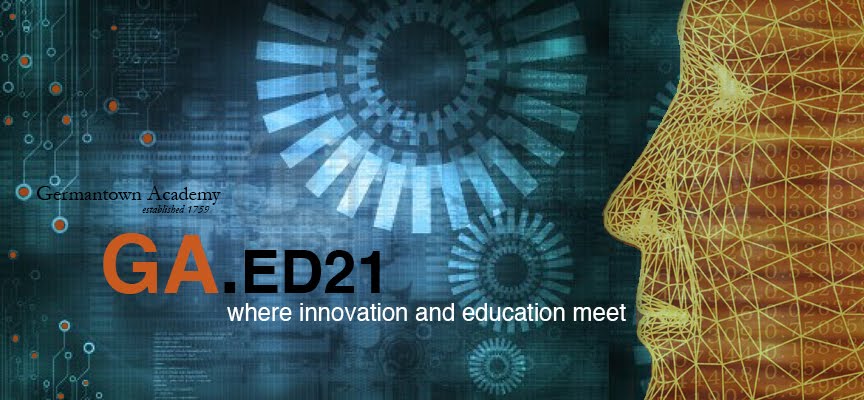Tuesday, April 30, 2013
Lower School Mounts Interactive Art Exhibition
Thursday, April 25, 2013
TI-Npsire Navigator System Makes Statistics Interactive
Ruth Carver, Chair of the US math department has been a change agent for the teaching of mathematics during the whole of her career. An early adapter of technology in the classroom, her recent work with the TI-Nspire Navigator System is changing the way students interact with each other and the subject. The TI-Nspire Navigator System uses the school's network to connect student and teacher computers for realtime assessment and instruction. When asked about the the process Carver shared this:
"Working with real data is an integral part of AP Statistics. In the past, this was not always easy to accomplish. In addition to finding relevant data sets, I would have to type them into my calculator and transfer them one at a time to student’s TI-84 calculators. This process was time consuming and also not an optimal way to utilize class time. It also pretty much ruled out using bigger, more interesting data sets. Using the system, I can copy a data set from the internet into the software version of the calculator on my computer and wirelessly transfer it to all of the students in the class. Voila! Within seconds we are ready to explore the data. The system also work seamlessly with the Smart board. I can view all of the student’s calculator screens on the Smart board and select a student to be the presenter, allowing the rest of the class to follow what she or he is doing on the calculator in real time. I can also add a link on Smart to a video clip or article that will give the class additional insight into the data that we are investigating. I have utilized the recording feature on Smart to produce interactive review lessons which can be accessed on the course site on the VLE in addition to applets for investigating statistical concepts and other interactive lessons. Smart + VLE + TI-Npsire = an engaged an interactive math class."
What We Are Reading
Keri Smith is a self proclaimed Guerilla Artist. She is also the author and illustrator of many best selling books on creativity, innovation, and inspiration. How to Be An Explorer of the World is one of her early books, a guided journal that encourages readers to analyze the world like scientists and artists as if they are seeing it for the first time. Upper school faculty and students will be working with this book and a variety of others by Smith that will be profiled here in the coming months. In the meantime you can learn more about Keri Smith at her website and blog.
Monday, April 22, 2013
Mixing It Up With Mixed Reality

Middle School Science teacher, Jim DiFranco and his sixth and eight grade students are changing the way they come to know the principles of motion and energy. Utilizing SMART technology, imported 3D content, a document camera, and hand manipulated computer controls, students are able to visualize everything from earthquakes and volcanoes to cell structure. By sharing his SMART notebook with the students by way of the SMART board, the class can interact with the 3D content by holding a patterned cube under the document camera and linking it to a 3D object.
Jim DiFranco reports that this process, "has transformed my teaching because it further allows me to maximize the potential of SMART via 3D content. Aside from being able to share this content with students through notebooks for them to manipulate at home, the document camera with mixed reality allows them to further explore and interact (virtually) with objects and simulations in class that deepens their understanding of key concepts."
Thursday, April 18, 2013
What We Are Reading
In his groundbreaking book, Creating Innovators: The Making of Young People Who Will Change the World, Harvard Professor Tony Wagner explores the best ways to develop the innovative capacity of our students. Bringing readers on a tour of our education system and the most forward thinking schools, colleges, and workplaces, he provides a road map for innovation and change for educators and parents alike. You can read more about Tony Wagner, innovation, and creating change on his blog.
Tuesday, April 16, 2013
iPads and Google Drive Transform Storytelling
Each year, after learning about many forms of folktales and researching animals native to the continent of Africa, third grade students in the lower school are asked to create their own "pourquoi" stories, or the reason something came to be. For years students typed their story into Microsoft Word on laptops and teachers edited it using a flashdrive. This method however effective, was clumsy and time consuming.
Teacher, Kathy Wyszomiersky and Assistant teacher, Andrew Dolan wanted to create a physical book as well as a companion digital version. After exploring an iPad app called Book Creator, they settled on Google Drive, an online program which allows users to create and share files as a means to build their digital books. Google Drive keeps track of any changes made to the document and saves it automatically allowing students to see their revision history. Using an iPad app named Sketchbook Express Pro, a graphic design program with responsive touch, students used a stylus to create images related to their story. Once pictures were completed, students imported the pictures and text into Book Creator. In book creator, students chose layout, created background colors and images, and added sound to each picture to make a sound effect, some even making an audiobook of their story. Andrew Dolan reports "It was really an amazing project and the students far exceeded our expectations. They are so intuitive with technology and showed they can multitask easily in many apps."
Subscribe to:
Posts (Atom)






















